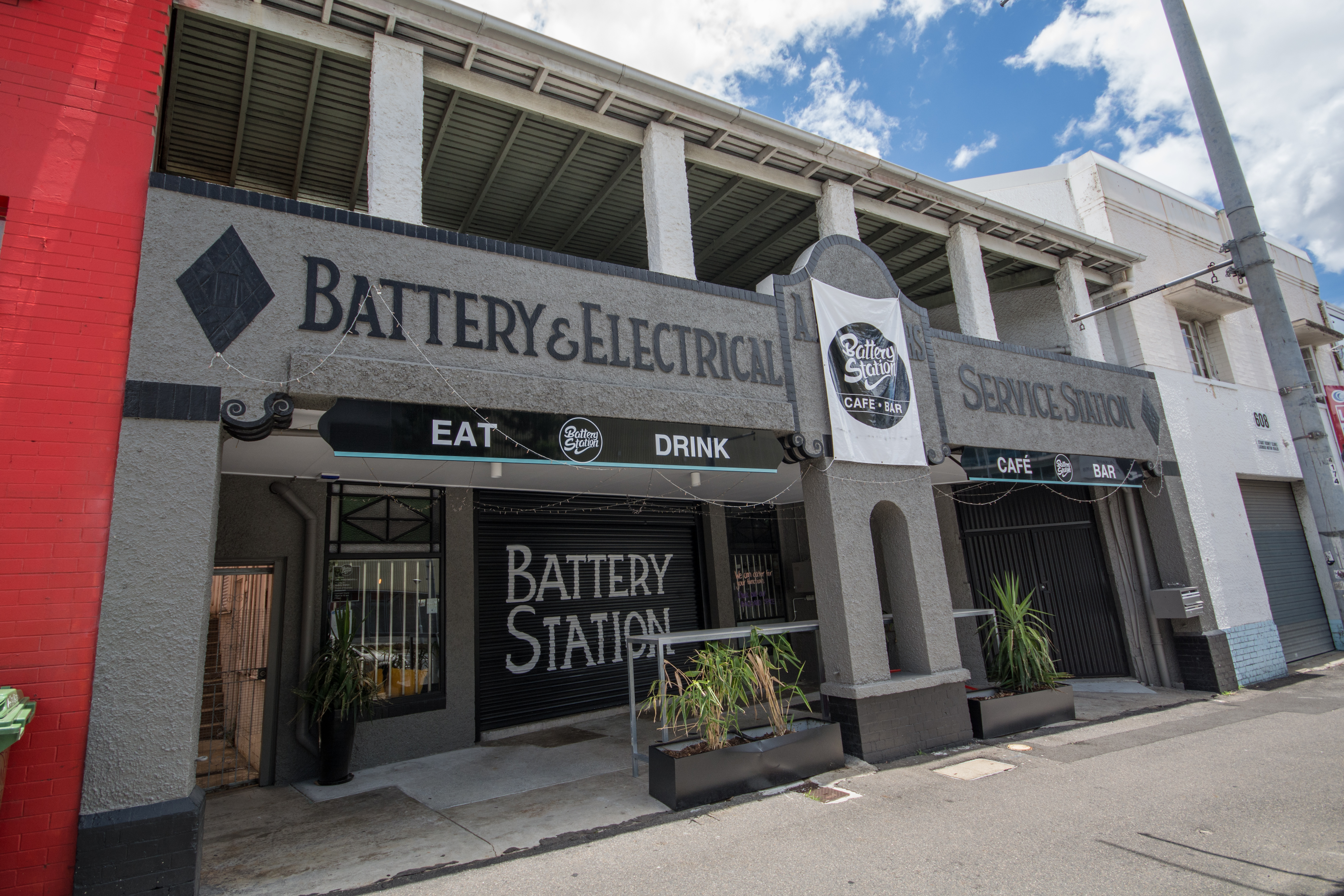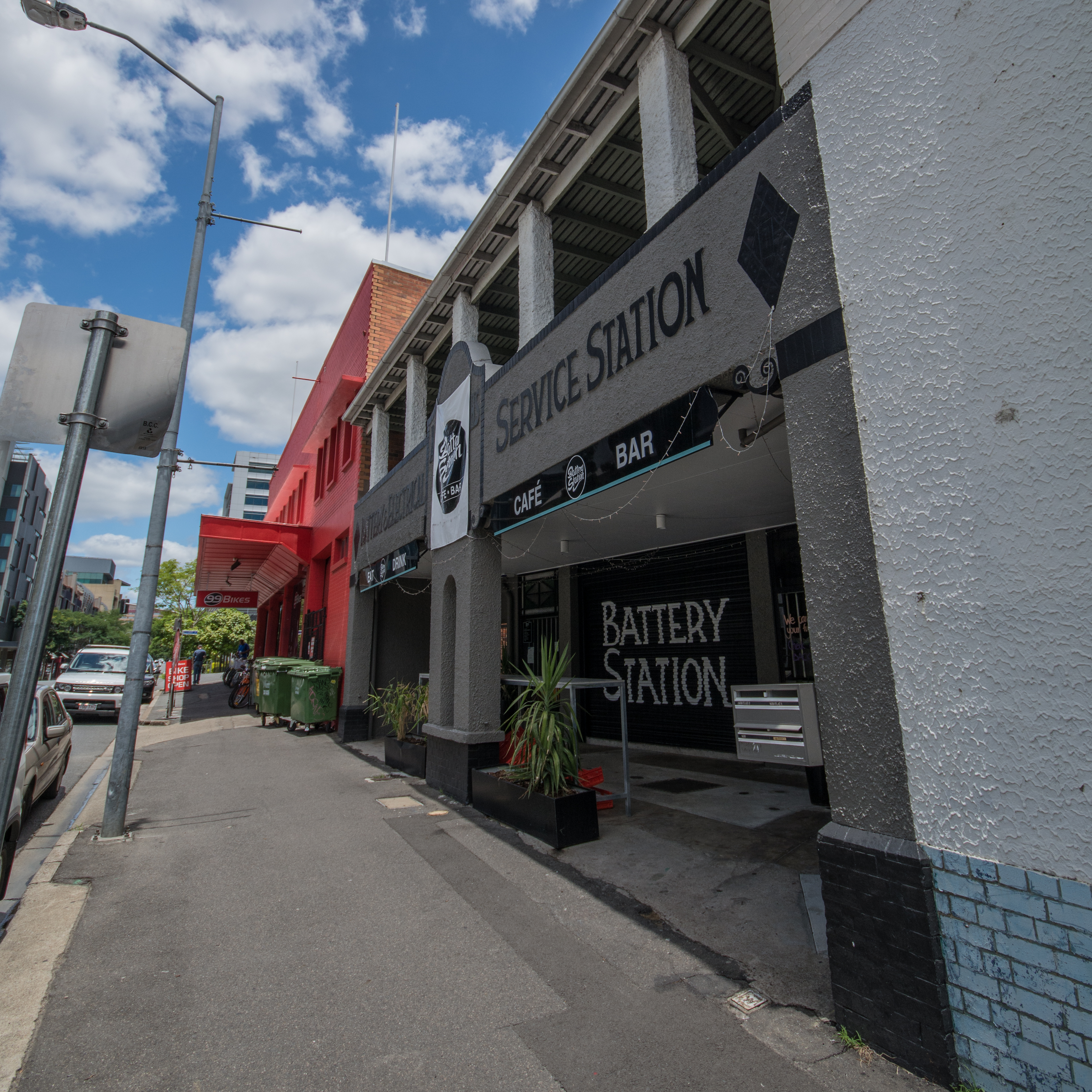Addresses
Type of place
Service station
Period
Interwar 1919-1939
Style
Spanish Mission
Addresses
Type of place
Service station
Period
Interwar 1919-1939
Style
Spanish Mission
This combined service station and residence was built in 1929 for battery specialist and electrical engineer Alfred E. Griffiths and is representative of an era when the motorcar was reaching a stage of sophistication requiring specialist electrical repairs. It is particularly significant as a rare example of an adaptation of the Spanish Mission style of architecture to an industrial building, as it was mostly only used for houses and churches. Griffiths operated his business from the building until 1946.
Lot plan
L2_RP170912
Key dates
Local Heritage Place Since —
Date of Information —
Construction
Walls: MasonryCriterion for listing
(A) Historical; (B) Rarity; (D) RepresentativeInteractive mapping
Lot plan
L2_RP170912
Key dates
Local Heritage Place Since —
Date of Information —
Construction
Walls: MasonryCriterion for listing
(A) Historical; (B) Rarity; (D) RepresentativeInteractive mapping
History
Alfred E. Griffiths, battery specialist and electrical engineer first moved into Wickham Street in 1927. However, it appears he did not build his Battery and Electrical Service Station until 1929. His residence and service station were in the adjacent buildings and Griffith continued to conduct his business in Wickham Street until 1946.
Description
The building is of two storeyed masonry construction with a painted brick base, pebble dash stucco surface to the lower floor walls and upper floor columns, and smooth render to the upper floor walls. The right hand side of the façade contains a ground floor pedestrian door with a bracketed concrete hood, and a large combined door and shopfront window, which may not be original. The upper floor has two casement window openings with cantilevered concrete hoods and a masonry parapet with a corbelled stringcourse and central vertical art deco moulded decoration.
The left hand side of the façade contains an open ground floor porch with flanking columns and a central double column with a semi circular arched division, with decorative moulded column brackets and brick-on-end capping to the underside of the first floor balcony. The balcony balustrade is solid masonry with a straight brick on edge capping except to the central section where it projects up to a curved top with a brick edging accentuating the central double column below. The balustrade contains the building’s name in decorative lettering, and diamond motifs in raised smooth render against a pebble-dash background.
Five square masonry columns above the balustrade are equally spaced about the centre line, with the end columns kept in from the end of the balustrade. The columns have a brick capping, and support a longitudinal verandah beam, which in turn supports closely spaced rafters with decoratively tapered ends. Low pitched corrugated iron roof sheeting on battens covers the open first floor balcony, and a scalloped vertical batten frieze is suspended below the verandah plate between the back edges of the columns, and the end returns.
The use of pebble-dash stucco round headed arches, and moulded column capitals gives the business portion of the building a distinctive Spanish Mission or Mediterranean appearance, while the other residential half has a more subdued art-deco style.
Statement of significance
Relevant assessment criteria
This is a place of local heritage significance and meets one or more of the local heritage criteria under the Heritage planning scheme policy of the Brisbane City Plan 2014. It is significant because:
References
-
Post Office Directories.
-
Titles Office Records
Citation prepared by — Brisbane City Council (page revised September 2021)


